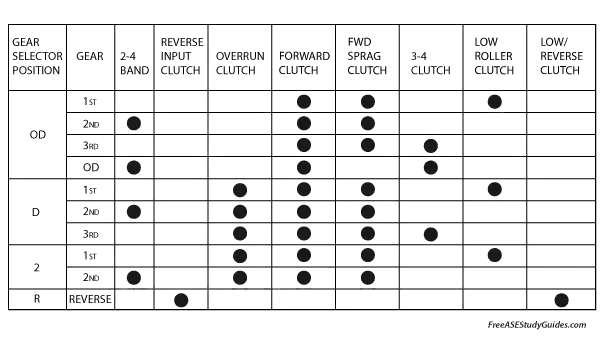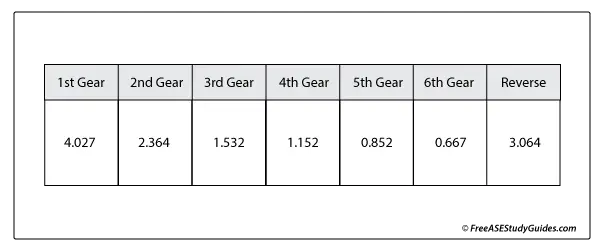ASE A2 Automatic Transmission Quiz
1. After a long drive, red fluid is seen on the transmission case and under a vehicle's chassis. Technician A says this could be caused by fluid aeration. Technician B says this could be caused by engine overheating. Who is correct?
2. There are metal flakes and shavings at the bottom of a transmission's oil pan. Which of the following is causing this debris?
3. A vehicle with an automatic transmission creeps forward in neutral. Which of the following is MOST likely causing this condition?
4. When removing a torque converter from an automatic transmission, the technician should:
5. After overhauling an automatic transmission, the input shaft is binding and has no endplay. Technician A says installing the transmission and driving the vehicle will correct this condition. Technician B says a thinner selective washer may be required. Who is correct?
7. A transaxle's final drive assembly has been replaced. Which of the following is used to measure ring gear backlash?
8. An automatic transaxle loses pressure as it shifts from first to second gear. Which of the following results in this condition?

10. Technician A says test ports to retrieve hydraulic pressure readings for the line, clutch, and servo circuits can be found on the outside of the transmission case. Technician B says air pressure tests are performed before and after transmission disassembly. Who is correct?
13. Technician A says that the torque converter lockup clutch provides a mechanical link between the engine and the transmission. Technician B says that when the lockup clutch is fully engaged, the turbine's speed matches the impeller's speed. Who is correct?
14. An automatic transmission has delayed engagement when shifting from Park into Drive or Reverse. Which of the following is LEAST likely to result in this condition?
15. Technician A says a faulty transmission range sensor will prevent starter operation. Technician B says to test an analog transmission range sensor with an ohmmeter. Who is correct?
16. Technician A says the valve body separator plate contains the seat for ball-type check valves. Technician B says ball-type check valves are placed in valve body hydraulic circuits to allow fluid flow in only one direction. Who is correct?
17. Technician A says the transmission oil pump is the source of all fluid flow in an automatic transmission. Technician B says that hydraulic flow charts display hydraulic fluid flow through the transmission's solenoids, valves, and oil circuits. Who is correct?
19. A vehicle with an automatic three-speed synchronous transmission slips when it shifts from first to second gear in drive. Technician A says that synchronous transmissions rely on precise shift timing; inaccurate timing will result in slipping and engine flare. Technician B says that early application of the intermediate band is causing this condition. Who is correct?
20. Which of the following sensors affect both the engine and the automatic transmission's performance?
Please select an answer

